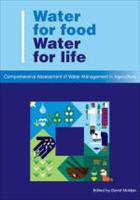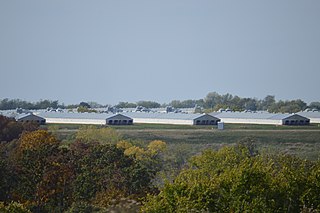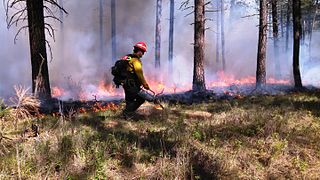 W
WAgricultural wastewater treatment is a farm management agenda for controlling pollution from surface runoff that may be contaminated by chemicals in fertiliser, pesticides, animal slurry, crop residues or irrigation water.
 W
WAgroforestry is a land use management system in which trees or shrubs are grown around or among crops or pastureland. This diversification of the farming system initiates an agroecological succession, like that in natural ecosystems, and so starts a chain of events that enhance the functionality and sustainability of the farming system. Trees also produce a wide range of useful and marketable products from fruits/nuts, medicines, wood products, etc. This intentional combination of agriculture and forestry has multiple benefits, such as greatly enhanced yields from staple food crops, enhanced farmer livelihoods from income generation, increased biodiversity, improved soil structure and health, reduced erosion, and carbon sequestration. Agroforestry practices are highly beneficial in the tropics, especially in subsistence smallholdings in sub-Saharan Africa and have been found to be beneficial in Europe and the United States.
 W
WThe report A Comprehensive Assessment of Water Management in Agriculture was published in 2007 by International Water Management Institute and Earthscan in an attempt to answer the question: how can water in agriculture be developed and managed to help end poverty and hunger, ensure environmentally sustainable practices, and find the right balance between food and environmental security?
 W
WIn animal husbandry, a concentrated animal feeding operation (CAFO), as defined by the United States Department of Agriculture (USDA), is an intensive animal feeding operation (AFO) in which over 1000 animal units are confined for over 45 days a year. An animal unit is the equivalent of 1000 pounds of "live" animal weight. A thousand animal units equates to 700 dairy cows, 1000 meat cows, 2500 pigs weighing more than 55 pounds (25 kg), 10,000 pigs weighing under 55 pounds, 10,000 sheep, 55,000 turkeys, 125,000 chickens, or 82,000 egg laying hens or pullets.
 W
WA controlled or prescribed burn, also known as hazard reduction burning, backfire, swailing, or a burn-off, is a fire set intentionally for purposes of forest management, farming, prairie restoration or greenhouse gas abatement. A controlled burn may also refer to the intentional burning of slash and fuels through burn piles. Fire is a natural part of both forest and grassland ecology and controlled fire can be a tool for foresters.
 W
WCowspiracy: The Sustainability Secret is a 2014 documentary film which explores the impact of animal agriculture on the environment, and investigates the policies of a few environmental organizations on this issue. The film looks at various environmental concerns, including global warming, water use, deforestation, and ocean dead zones, and suggests that animal agriculture is the primary source of environmental destruction.
 W
WA harmful algal bloom (HAB) contains organisms that can severely lower oxygen levels in natural waters, killing organisms in marine or fresh waters. Some HABs are associated with algae-produced toxins. Blooms can last from a few days to many months. After the bloom dies, the microbes which decompose the dead algae use up even more of the oxygen, which can create fish die-offs. When these zones of depleted oxygen cover a large area for an extended period of time neither fish nor plants are able to survive.
 W
WNatural farming is an ecological farming approach established by Masanobu Fukuoka (1913–2008), a Japanese farmer and philosopher, introduced in his 1975 book The One-Straw Revolution. Fukuoka described his way of farming as 自然農法 in Japanese. It is also referred to as "the Fukuoka Method", "the natural way of farming" or "do-nothing farming". The title refers not to lack of effort, but to the avoidance of manufactured inputs and equipment. Natural farming is related to fertility farming, organic farming, sustainable agriculture, agroecology, agroforestry, ecoagriculture and permaculture, but should be distinguished from biodynamic agriculture.
 W
WPlant-for-the-Planet is an organisation that aims to raise awareness amongst children and adults about the issues of climate change and global justice. The Initiative also works to plant trees and considers this to be both a practical and symbolic action in efforts to reduce the effect of climate change. In 2011, it reached a goal of planting a million trees.
 W
WShifting cultivation is an agricultural system in which plots of land are cultivated temporarily, then abandoned while post-disturbance fallow vegetation is allowed to freely grow while the cultivator moves on to another plot. The period of cultivation is usually terminated when the soil shows signs of exhaustion or, more commonly, when the field is overrun by weeds. The length of time that a field is cultivated is usually shorter than the period over which the land is allowed to regenerate by lying fallow. This technique is often used in LEDCs or LICs. In some areas, cultivators use a practice of slash-and-burn as one element of their farming cycle. Others employ land clearing without any burning, and some cultivators are purely migratory and do not use any cyclical method on a given plot. Sometimes no slashing at all is needed where regrowth is purely of grasses, an outcome not uncommon when soils are near exhaustion and need to lie fallow. In shifting agriculture, after two or three years of producing vegetable and grain crops on cleared land, the migrants abandon it for another plot. Land is often cleared by slash-and-burn methods—trees, bushes and forests are cleared by slashing, and the remaining vegetation is burnt. The ashes add potash to the soil. Then the seeds are sown after the rains.